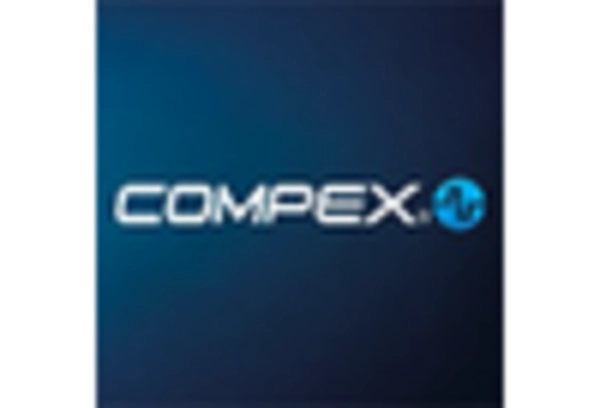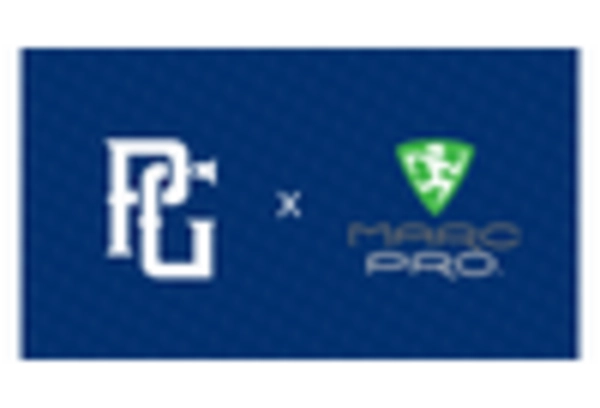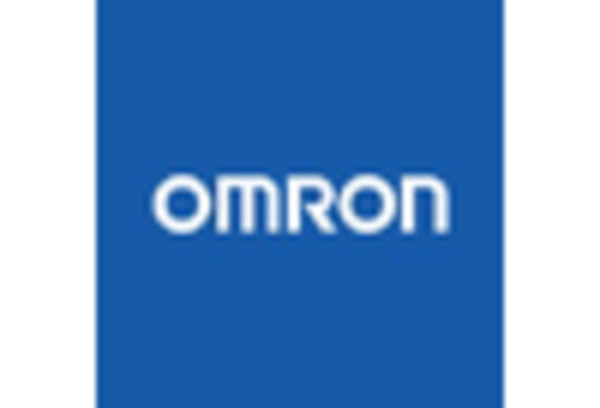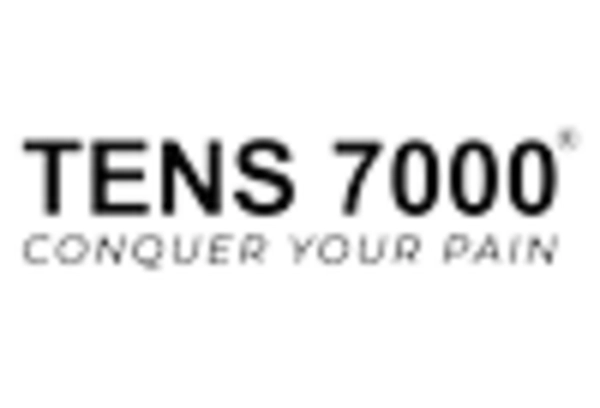The muscle stimulator market in Japan is characterized by a dynamic competitive landscape, driven by technological advancements and increasing consumer awareness regarding health and wellness. Key players such as Omron Healthcare (JP), Compex (CH), and PowerDot (US) are at the forefront, each adopting distinct strategies to enhance their market presence. Omron Healthcare (JP) focuses on innovation in product development, particularly in integrating smart technology into their devices, which aligns with the growing trend of digital health solutions. Meanwhile, Compex (CH) emphasizes partnerships with fitness professionals to promote their products, thereby enhancing brand credibility and consumer trust. PowerDot (US) appears to be leveraging a direct-to-consumer model, which allows for greater engagement and feedback from users, thus refining their offerings based on real-world usage.
The business tactics employed by these companies reflect a moderately fragmented market structure, where localized manufacturing and supply chain optimization are becoming increasingly vital. Companies are investing in regional production facilities to reduce lead times and enhance responsiveness to market demands. This localized approach not only mitigates supply chain risks but also allows for tailored marketing strategies that resonate with local consumers. The collective influence of these key players shapes a competitive environment that is both innovative and responsive to consumer needs.
In October 2025, Omron Healthcare (JP) launched a new line of muscle stimulators that incorporate AI technology to personalize treatment plans for users. This strategic move is significant as it positions the company as a leader in the integration of advanced technology within the muscle stimulator segment, potentially attracting a tech-savvy consumer base. The ability to offer customized solutions may enhance user satisfaction and loyalty, thereby driving sales growth.
In September 2025, Compex (CH) announced a collaboration with a leading sports rehabilitation center to develop specialized training programs utilizing their muscle stimulators. This partnership is likely to enhance the visibility of Compex products among professional athletes and rehabilitation specialists, fostering a reputation for efficacy and reliability. Such strategic alliances can be pivotal in establishing a strong foothold in niche markets, particularly in sports and rehabilitation.
In August 2025, PowerDot (US) expanded its distribution network by partnering with major e-commerce platforms in Japan. This expansion is crucial as it increases accessibility for consumers, allowing PowerDot to tap into a broader audience. The strategic focus on e-commerce aligns with current consumer purchasing trends, where online shopping continues to gain traction, particularly in health and wellness sectors.
As of November 2025, the competitive trends within the muscle stimulator market are increasingly defined by digitalization, sustainability, and the integration of AI technologies. Strategic alliances are becoming more prevalent, as companies recognize the value of collaboration in enhancing product offerings and market reach. Looking ahead, competitive differentiation is likely to evolve from traditional price-based strategies to a focus on innovation, technological advancements, and supply chain reliability. This shift underscores the importance of not only meeting consumer expectations but also anticipating future trends in health and wellness.

















Leave a Comment